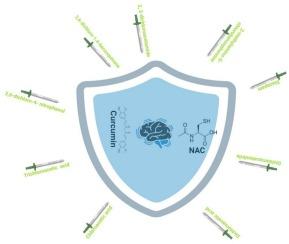Neurotoxicity and protective strategies of chlorinated drinking water disinfection byproducts
IF 6.7
2区 工程技术
Q1 ENGINEERING, CHEMICAL
引用次数: 0
Abstract
Water disinfection can kill bacteria, viruses, parasites and other microorganisms in water, and therefore greatly reducing the spread of waterborne diseases. The effects of water disinfection byproducts (DBPs) on mutagenesis, carcinogenesis, and teratogenesis have been extensively studied. However, there are few studies on the neurotoxic effects of DBPs. For the first time, we review the neurotoxic effects and mechanisms of chlorinated disinfection byproducts (Cl-DBPs). The neurotoxic mechanisms of DBPs include induction of endoplasmic reticulum stress, oxidative stress, DNA damage, energy metabolism disorders, and apoptosis in nerve cells. In view of the neurotoxic mechanisms of DBPs, some studies have found that natural polyphenols can protect against the neurotoxicity of DBPs. Our review provides a theoretical basis for research on the mechanisms and prevention of neurotoxicity induced by DBPs.

氯化饮用水消毒副产物的神经毒性及保护策略
水消毒可以杀灭水中的细菌、病毒、寄生虫等微生物,从而大大减少水传播疾病的传播。水消毒副产物(DBPs)对诱变、致癌和致畸的影响已被广泛研究。然而,关于dbp的神经毒性作用的研究很少。本文首次综述了氯化消毒副产物(Cl-DBPs)的神经毒性作用及其机制。DBPs的神经毒性机制包括诱导内质网应激、氧化应激、DNA损伤、能量代谢紊乱和神经细胞凋亡。针对DBPs的神经毒性机制,一些研究发现天然多酚对DBPs的神经毒性具有保护作用。为DBPs神经毒性机制的研究和预防提供理论依据。
本文章由计算机程序翻译,如有差异,请以英文原文为准。
求助全文
约1分钟内获得全文
求助全文
来源期刊

Journal of water process engineering
Biochemistry, Genetics and Molecular Biology-Biotechnology
CiteScore
10.70
自引率
8.60%
发文量
846
审稿时长
24 days
期刊介绍:
The Journal of Water Process Engineering aims to publish refereed, high-quality research papers with significant novelty and impact in all areas of the engineering of water and wastewater processing . Papers on advanced and novel treatment processes and technologies are particularly welcome. The Journal considers papers in areas such as nanotechnology and biotechnology applications in water, novel oxidation and separation processes, membrane processes (except those for desalination) , catalytic processes for the removal of water contaminants, sustainable processes, water reuse and recycling, water use and wastewater minimization, integrated/hybrid technology, process modeling of water treatment and novel treatment processes. Submissions on the subject of adsorbents, including standard measurements of adsorption kinetics and equilibrium will only be considered if there is a genuine case for novelty and contribution, for example highly novel, sustainable adsorbents and their use: papers on activated carbon-type materials derived from natural matter, or surfactant-modified clays and related minerals, would not fulfil this criterion. The Journal particularly welcomes contributions involving environmentally, economically and socially sustainable technology for water treatment, including those which are energy-efficient, with minimal or no chemical consumption, and capable of water recycling and reuse that minimizes the direct disposal of wastewater to the aquatic environment. Papers that describe novel ideas for solving issues related to water quality and availability are also welcome, as are those that show the transfer of techniques from other disciplines. The Journal will consider papers dealing with processes for various water matrices including drinking water (except desalination), domestic, urban and industrial wastewaters, in addition to their residues. It is expected that the journal will be of particular relevance to chemical and process engineers working in the field. The Journal welcomes Full Text papers, Short Communications, State-of-the-Art Reviews and Letters to Editors and Case Studies
 求助内容:
求助内容: 应助结果提醒方式:
应助结果提醒方式:


